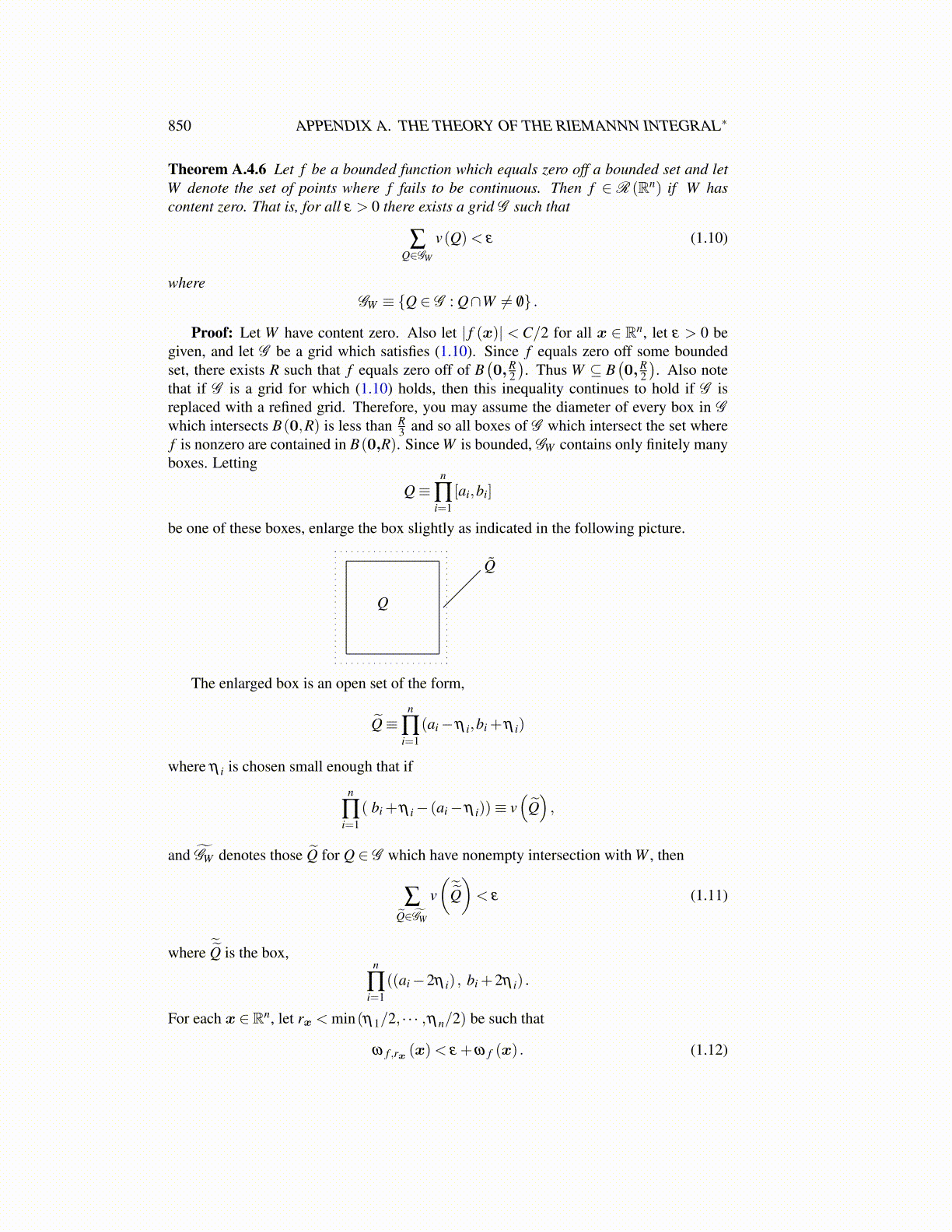
850 APPENDIX A. THE THEORY OF THE RIEMANNN INTEGRAL∗
Theorem A.4.6 Let f be a bounded function which equals zero off a bounded set and letW denote the set of points where f fails to be continuous. Then f ∈ R (Rn) if W hascontent zero. That is, for all ε > 0 there exists a grid G such that
∑Q∈GW
v(Q)< ε (1.10)
whereGW ≡ {Q ∈ G : Q∩W ̸= /0} .
Proof: Let W have content zero. Also let | f (x)| < C/2 for all x ∈ Rn, let ε > 0 begiven, and let G be a grid which satisfies (1.10). Since f equals zero off some boundedset, there exists R such that f equals zero off of B
(0,R
2
). Thus W ⊆ B
(0,R
2
). Also note
that if G is a grid for which (1.10) holds, then this inequality continues to hold if G isreplaced with a refined grid. Therefore, you may assume the diameter of every box in Gwhich intersects B(0,R) is less than R
3 and so all boxes of G which intersect the set wheref is nonzero are contained in B(0,R). Since W is bounded, GW contains only finitely manyboxes. Letting
Q≡n
∏i=1
[ai,bi]
be one of these boxes, enlarge the box slightly as indicated in the following picture.
Q
Q̃
The enlarged box is an open set of the form,
Q̃≡n
∏i=1
(ai−η i,bi +η i)
where η i is chosen small enough that if
n
∏i=1
( bi +η i− (ai−η i))≡ v(
Q̃),
and G̃W denotes those Q̃ for Q ∈ G which have nonempty intersection with W , then
∑Q̃∈G̃W
v(˜̃Q)< ε (1.11)
where ˜̃Q is the box,n
∏i=1
((ai−2η i) , bi +2η i) .
For each x ∈ Rn, let rx < min(η1/2, · · · ,ηn/2) be such that
ω f ,rx (x)< ε +ω f (x) . (1.12)